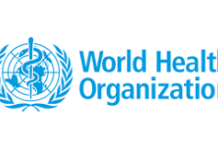A study by Dr. Anuj Dixit and Professor Pankaj Dutta from the Shailesh J. Mehta School of Management at IIT Bombay has highlighted key factors for effectively implementing the circular economy model in healthcare waste management. Their research, published in the Clean Technologies and Environmental Policy journal, was conducted from January to August 2023.
The study addresses the pressing issue of medical waste generation in India, which in 2020 amounted to 774 tons of biomedical waste daily. Additionally, large quantities of used and unused medical supplies, instruments, and packaging are improperly disposed of by healthcare facilities and individuals, as noted by Professor Dutta. The safe disposal of this waste is challenging due to the lack of specialized methods and technologies, inadequate public awareness and professional training, and insufficient funding for effective waste management systems.
Dr. Dixit emphasized that the ‘reduce-reuse-recycle’ approach, known as the circular economy model, can significantly reduce pollution and environmental harm compared to the traditional ‘take-make-dispose’ method. Despite its proven efficacy in non-healthcare sectors, its application in healthcare remains underexplored.
The researchers gathered data through a survey of medical practitioners and professionals from 54 healthcare organizations in India, including hospitals, nursing homes, waste recycling units, laboratories, and pharmaceutical companies. The survey focused on factors such as awareness and training, budget, technology use, waste segregation and collection, and stakeholder responsibilities.
According to Dr. Dixit, policymakers should initially focus on critical success factors (CSFs) like technology involvement, segregation/collection, monitoring and regulation, and product design. Less critical CSFs such as tax incentives, stakeholder responsibilities, information visibility, and training should be considered based on their importance and the level of adoption of the circular economy model. These factors will be reevaluated continuously to ensure satisfactory implementation.
The study found that ‘government responsibility’ and ‘stakeholder participation’ have the highest driving potential, while ‘segregation and collection,’ though critical, depend on other causal CSFs. Factors like ‘information visibility and transparency,’ ‘manufacturer/corporate responsibility,’ ‘training and empowerment,’ and ‘budget allocation’ significantly impact healthcare waste management.
As reported by Medical Buyer, Dr. Dixit pointed out several challenges to implementing a circular economy in India’s healthcare sector. These include inadequate infrastructure and technology in many healthcare facilities, the high initial costs of transitioning to a circular economy, and the need for coordinated efforts among various stakeholders to implement recycling programs effectively.
























